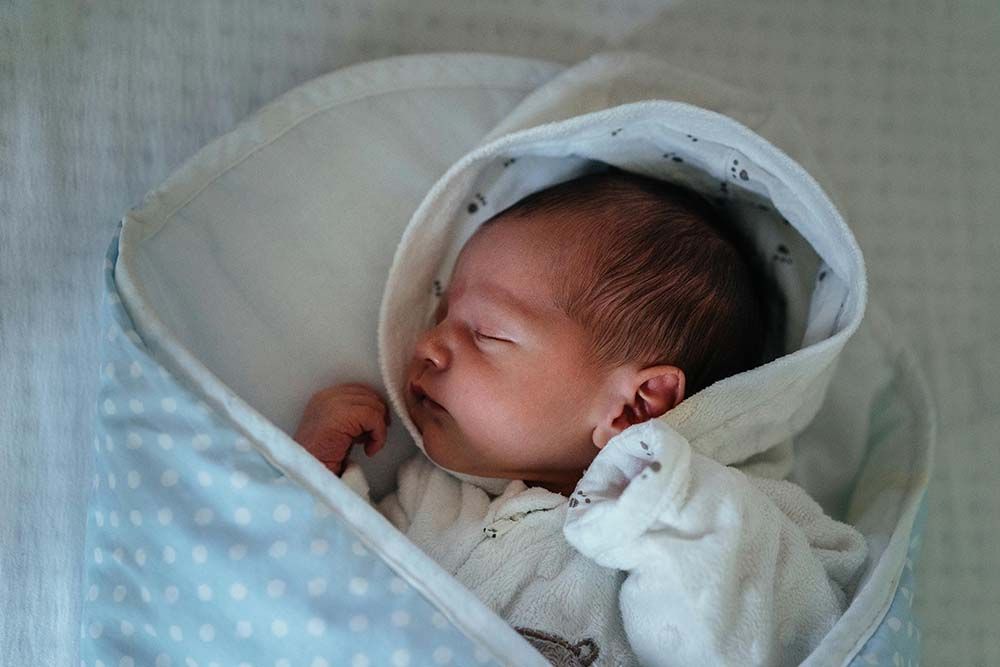

At five months, your baby develops a longer awake time during the day and undergoes marvellous changes. They constantly acquire new skills when they are awake, including responding or interacting with the world around them, imitating the surrounding sounds by cooing, babbling and gurgling. In addition, their sleep patterns have noticeable changes and become much more predictable. Read on to find out more details on 5 month old sleep schedule.
Moreover, you can use Moonycare app, which allows you to record your baby's morning waking time, bedtime, and hours of sleep each day and then customize a unique sleep schedule for your baby. It can even incorporate age-appropriate wake windows between sleeps!
IN THIS ARTICLE:
What are Wake Windows for a 5 Month Old?
A Sample Sleep Schedule for 5 Month Old Babies
How Much Should a 5 Month Old Sleep?
How Long Should a 5 Month Old Nap?
How Many Naps are Suitable for a 5 Month Old?
Can you Sleep Train a 5-month-old?
Is there Sleep Regression for 5 Month Old Babies?
What are Wake Windows for a 5 Month Old?
At five months old, a baby's wake window typically ranges from 2 to 3 hours. Generally, wake windows are shorter in the morning and gradually lengthen as the day goes on. For instance, the first nap usually happens around 2 hours after waking up in the morning, the second nap tends to occur about 2.5 hours after the first nap ends, the third nap typically starts around 2.5 hours after the second nap concludes, and bedtime generally falls 2.5 to 3 hours after the third nap finishes.
However, in the initial stage, it's common for some babies to struggle with a 3-hour wake window towards the end of the day.
Sample 5 Month Old Sleep Schedule
How Much Should a 5 Month Old Sleep?
With the development of baby, the sleep schedule will change gradually. At 5 months, it is recommended to sleep around 12 to 15 hours within a day, including nighttime sleep and daytime sleep. And an ideal bedtime should be between 7:00 and 8:00 pm. Keep in mind that your baby require 2.5 -3 hours of wakefulness before falling asleep, so make a reasonable plan for naps to avoid sleep resistance or frequently wakings during sleep.
How Long Should a 5 Month Old Nap?
The recommended nap time for a 5-month-old baby is 3-4 hours in total. At this age, the duration of each nap is not fixed, usually 30 - 45 minutes. Make sure that any nap should not exceed 2 hours. One the one hand, an overly long nap may hinder your baby's capacity to consolidate the upcoming naps and nighttime sleeps. One the other hand, it is for guaranteeing that your baby has sufficient active and awake time and receive ample intake.
How Many Naps are Expected for a 5 Month Old?
At 5 months, baby tends to take 3-4 naps a day. For the majority babies, they will reach a temporary nap transition period. At the period, your baby might take turns to have 3 naps or 4 naps one day. Shifting between 3-nap and 4-nap days can enable your baby to stay well-rested as they adapt to staying awake for longer intervals.
Can you Sleep Train a 5-month-old?
At this age, some babies might have already formed sleep routines and could respond effectively to sleep training techniques. However, others might not. If your 5-month-old has difficulty falling asleep independently, sleep training could be helpful and bring more peaceful nights for the family.
Among various sleep training methods, you can choose the suitable one according to your personal preferences and comfort degree. Some suggest no parental interference at all, while others, like the Ferber method and chair method, permit some soothing that gradually reduces over time. You can also try to put them into their sleep area when they are drowsy but not yet falling asleep. This way can assist them in sleep independently with fewer nighttime awakenings.
Is there a 5-Month Sleep Regression?
Yes, but not for all 5-month babies. Generally speaking, sleep regression typically occurs at 4 months and 6 months. But it might happen at 5 months. During this period, babies become difficult to handle, such as resisting bedtime or naptime, irregular and frequent night wakings, waking up too early or not falling asleep at night. All these makes parents frustrated and exhausted. If you want to quell the regression, the appropriate solution is to perform a consistent plan to get the baby back to a regular sleep circle.
5-Month-Old Sleep Tips
-
Keep an eye on sleep cues.Actions like rubbing eyes, fidgeting, thumb sucking and yawning indicate that your baby is prepared for falling asleep. These indications can differ among babies, so the more attuned you are to your little one's specific sleepiness cues, the better you'll manage to lay him down to sleep as soon as he is ready.
-
Adhere to a routine. You can persist in aconstant bedtime routine to help your baby into the proper mood for sleeping, such as reading a book, listening to music and taking a bath.
-
Try to sleep in his crib. Inevitably, there will be days when your baby naps while on the move, but do your utmost to lay him down to nap in his crib whenever possible.

























